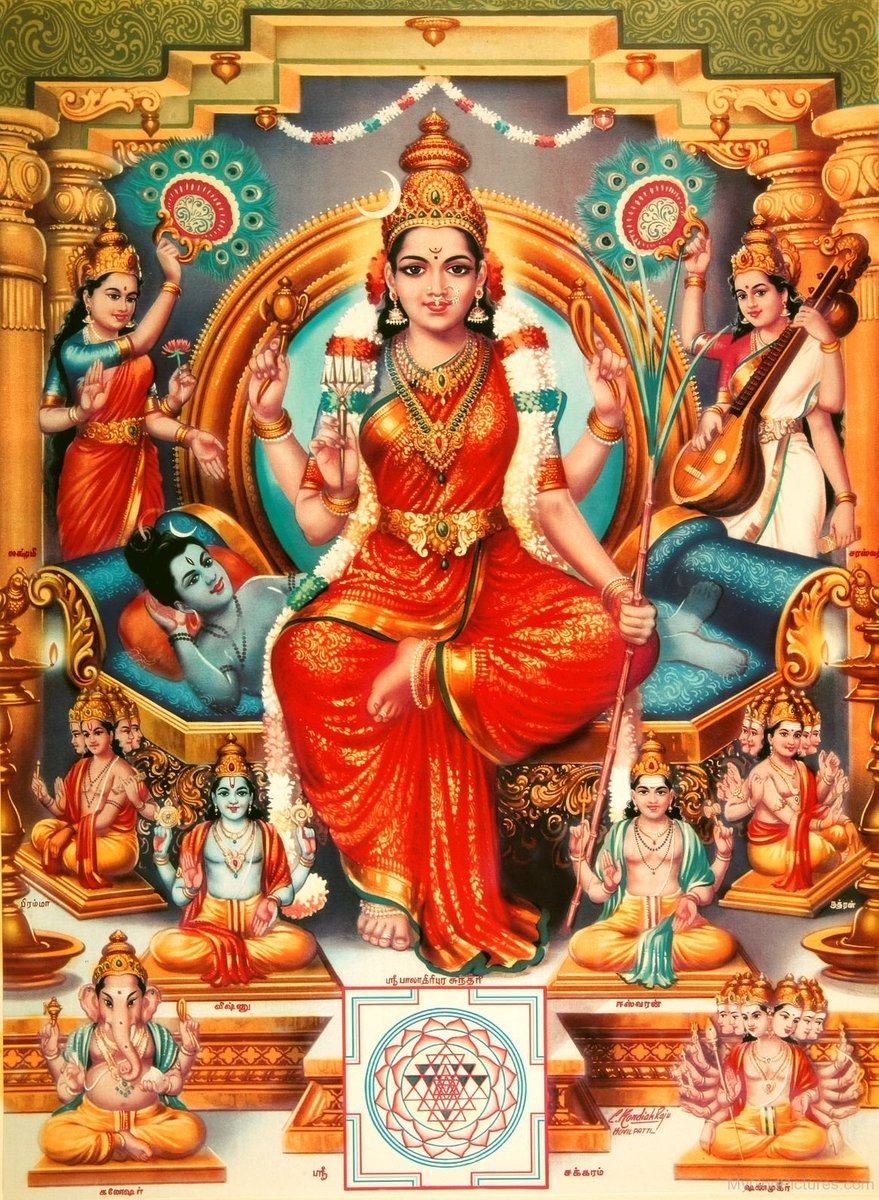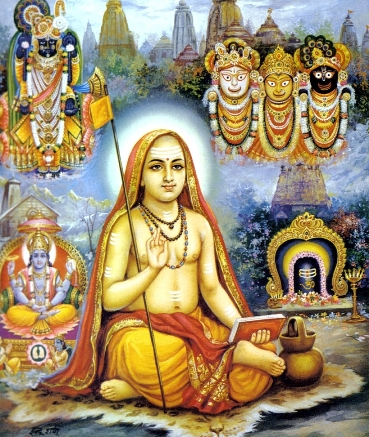
Devi Sarasvatī : How the Devi of River transformed into the Devi of Knowledge?
Goddess Sarasvatī is one of the few Vedic Goddesses who is still worshipped widely. She is the Goddess of knowledge, art and culture.
Goddess Sarasvatī is one of the few Vedic Goddesses who is still worshipped widely. She is the Goddess of knowledge, art and culture.

We first find her name in the Ṛg Vedas (Samhitā). She was the personification of the river Sarasvatī.
River Sarasvatī was the most sacred river in the entire Āryāvarta. It used to flow from the Himalayas to the Arabian sea.
River Sarasvatī was the most sacred river in the entire Āryāvarta. It used to flow from the Himalayas to the Arabian sea.
Vedic sacrifices used to take place on the bank of this river. The heart of Āryāvarta was known as Brahmāvarta (modern-day Kurukshetra).
It was the land between the river Sarasvatī and one of its tributary known as Dṛṣadvatī.
It was the land between the river Sarasvatī and one of its tributary known as Dṛṣadvatī.
There are three Suktas in Ṛg Veda dedicated to Sarasvatī (VI.61, VII.95, VII.96).
Besides that, numerous individual Ślokas mention her (For example, I.3.10-12, II.41.16).
From those descriptions, we understand that it was indeed a mighty river.
Besides that, numerous individual Ślokas mention her (For example, I.3.10-12, II.41.16).
From those descriptions, we understand that it was indeed a mighty river.
iyaṁ śuṣmebhir bisakhā ivārujat sānu girīṇāṁ taviṣebhir ūrmibhiḥ
"With enraged snortings, like one who digs up lotus roots, this one broke the back of mountains with her strong waves." - VI.61.2
"With enraged snortings, like one who digs up lotus roots, this one broke the back of mountains with her strong waves." - VI.61.2
However, something interesting happened in the age of Brāhmaṇas.
The river Goddess transformed into the Goddess of speech.
There she was identified as Vāgdevī. Phrases such as "Vāg Vai Sarasvatī" or "Vāg Eva Sarasvatī" were frequently used.
The river Goddess transformed into the Goddess of speech.
There she was identified as Vāgdevī. Phrases such as "Vāg Vai Sarasvatī" or "Vāg Eva Sarasvatī" were frequently used.
These phrases emphasize the oneness of the meaning of the two words. For example, in Jaiminīya Brāhmaṇa, there is the following passage -
"Sarasvatyā upamajjane dīkṣā; dakṣine tīre dīkṣānte/... Sarasvatyā yanti, Vāg vai Sarasvatī."
"Sarasvatyā upamajjane dīkṣā; dakṣine tīre dīkṣānte/... Sarasvatyā yanti, Vāg vai Sarasvatī."
Meaning : Their initiation is done after the completion of bath in the Sarasvatī, which is taken on the right bank after the initiation ceremony. They approach Sarasvatī. Sarasvatī is indeed speech.
The story of this transformation is fascinating.
The story of this transformation is fascinating.
There was a separate deity known as Vāc in Ṛg Veda. She was mentioned in only one Sukta - the Devīsukta (X.125).
It is a very famous Sukta because it contains the seed of Sākta tradition that flourished later. Anyway, Vāc was the presiding deity of speech.
It is a very famous Sukta because it contains the seed of Sākta tradition that flourished later. Anyway, Vāc was the presiding deity of speech.
Now the question that intrigues us, why these two deities got merged. Two most fundamental reasons are as follows:
1. Though Vāc was the separate deity for speech, Sarasvatī was associated with dhī or intellect in Ṛg Veda itself (VI.61.4 "Dhīnāmavitryavatu").
1. Though Vāc was the separate deity for speech, Sarasvatī was associated with dhī or intellect in Ṛg Veda itself (VI.61.4 "Dhīnāmavitryavatu").
She was described as the helper of visionary thoughts. Intellect is the prerequisite of speech. That's how later, Sarasvatī got identified with speech.
2. There is a geographic factor as well. Vedic sacrifices used to take place on the bank of Sarasvatī. As the utterance of sacred Mantras used to take place on this riverbank, it definitely helped.
That's how the features of Vāc got superimposed on Sarasvatī.
That's how the features of Vāc got superimposed on Sarasvatī.
In the age of the Mahābhārata, Sarasvatī directly became the Goddess of knowledge.
This is not because she is identified with Vāc; she no longer needs the mediation of Vāc. Now she presides over knowledge directly.
In Mahābhārata (12.326.5), Nārāyaṇa says to sage Nārada:
This is not because she is identified with Vāc; she no longer needs the mediation of Vāc. Now she presides over knowledge directly.
In Mahābhārata (12.326.5), Nārāyaṇa says to sage Nārada:
"Behold Goddess Sarasvatī, the mother of the Vedas, established in me
(vedānāṃ mātaraṃ paśya matsthāṃ devīm sarasvatīm)."
(vedānāṃ mātaraṃ paśya matsthāṃ devīm sarasvatīm)."
Thus gradually, Vāc lost in oblivion; and Sarasvati became the prominent deity. This is the final step in the identification process.
In Mahābhārata (12.330.10), Sarasvatī is described as the daughter of Brahmā. In the Purana, she also becomes his consort.
In Mahābhārata (12.330.10), Sarasvatī is described as the daughter of Brahmā. In the Purana, she also becomes his consort.
One of the epithets of Sarasvatī is Bhāratī. Puṣpānjali mantra of Devī Sarasvatī mentions her as Bhārati.
Again Bhāratī was a separate deity in the Ṛg Veda. The triad of three deities Bhāratī, Iḷā/Iḍā and Sarasvatī, usually was invoked together in sacrifices.
Again Bhāratī was a separate deity in the Ṛg Veda. The triad of three deities Bhāratī, Iḷā/Iḍā and Sarasvatī, usually was invoked together in sacrifices.
Later Bhāratī got merged with Sarasvatī. Probably this merger happened because Bhāratī was also identified with Vāc in Bṛhaddevatā (5.101, 3.12).
Let's end this thread with an ancient prayer to the Goddess from the Vedas -
Let's end this thread with an ancient prayer to the Goddess from the Vedas -
अम्बितमे नदीतमे देवितमे सरस्वति।
अप्रशस्ता इव स्मसि प्रशस्तिमम्ब नस्कृधि॥
(O best mother, best river, best Goddess Sarasvatī- we are like ones unlauded: make a laud for us mother)
- Ṛg Veda II.41.16
अप्रशस्ता इव स्मसि प्रशस्तिमम्ब नस्कृधि॥
(O best mother, best river, best Goddess Sarasvatī- we are like ones unlauded: make a laud for us mother)
- Ṛg Veda II.41.16
This thread was published as article on @HinduMediaWiki blog titled : "Goddess Sarasvatī : Goddess of River transformed into the Goddess of Knowledge"
blog.hindumediawiki.com/2021/06/04/god…
blog.hindumediawiki.com/2021/06/04/god…
• • •
Missing some Tweet in this thread? You can try to
force a refresh







